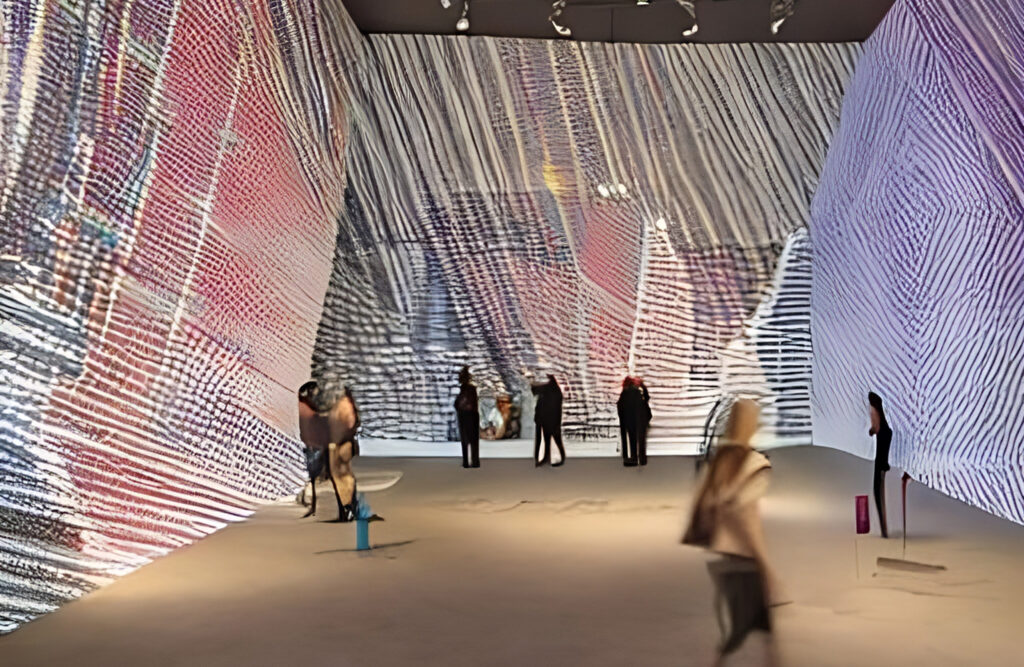Immerse yourself in the phenomenon of immersive exhibitions, which have been a resounding success for several years now. From Monet to Picasso to Klimt, the great masters of art come to life under XXL digital filters. Today, immersive art is flourishing in every corner of the globe, attracting audiences eager for novelty and magic. This growing fascination with immersive experiences reveals the emergence of a real boom in this field. Companies, retail brands, museums and entertainment centers are seizing the opportunity to create unique and captivating places to offer their visitors unforgettable sensory experiences. In this constantly evolving world, Neodigital stands out as a trusted partner, combining creativity and cutting-edge technology to create exceptional immersive environments. Find out how this trend continues to gain ground, and how you too can ride this wave of innovation and fascination in immersive experiences.
The Gustav Klimt exhibition at Paris’ Atelier des Lumières, Paris’ first digital art center, attracted 1.2 million visitors in just a few months in 2018. In October 2019, the center will also host the first edition of the Immersive Art Festival .

Beyond the capital, the whole country is now gripped by immersive art fever. The Imagine Picasso international exhibition was held at La Sucrière in Lyon at the start of the year. Visitors could walk through giant images projecting over 200 of Picasso’s paintings.
Immersive exhibitions are also planned for 2020. From Salvador Dali at the Carrières de Lumières in Baux-de-Provence to Gustav Klimt at the Bassins des Lumières in Bordeaux, visitors are in for a treat.
While immersion is based on a variety of new technologies, most immersive exhibitions use video mapping. At the Carrières de Lumières in Baux-de-Provence, 100 video projectors project high-definition digital images onto giant walls, to the rhythm of a musical score.
Virtual reality, meanwhile, is the rising technology in immersive art. It’s now commonplace to come across a VR headset in a museum. Thanks to a 3D screen and motion sensors, you’re immediately transported into another world.
Since 2016, the VR Arles Festival has been showcasing artistic creation around virtual reality every summer. And in April 2019, the Palais de Tokyo in Paris opened the “Palais Virtuel”, a new space entirely dedicated to works of art in virtual reality.
Cultural institutions often call on the talents of artists like Basile Bohard and his neodigital studio to create immersive exhibitions.
Why shouldn’t you?